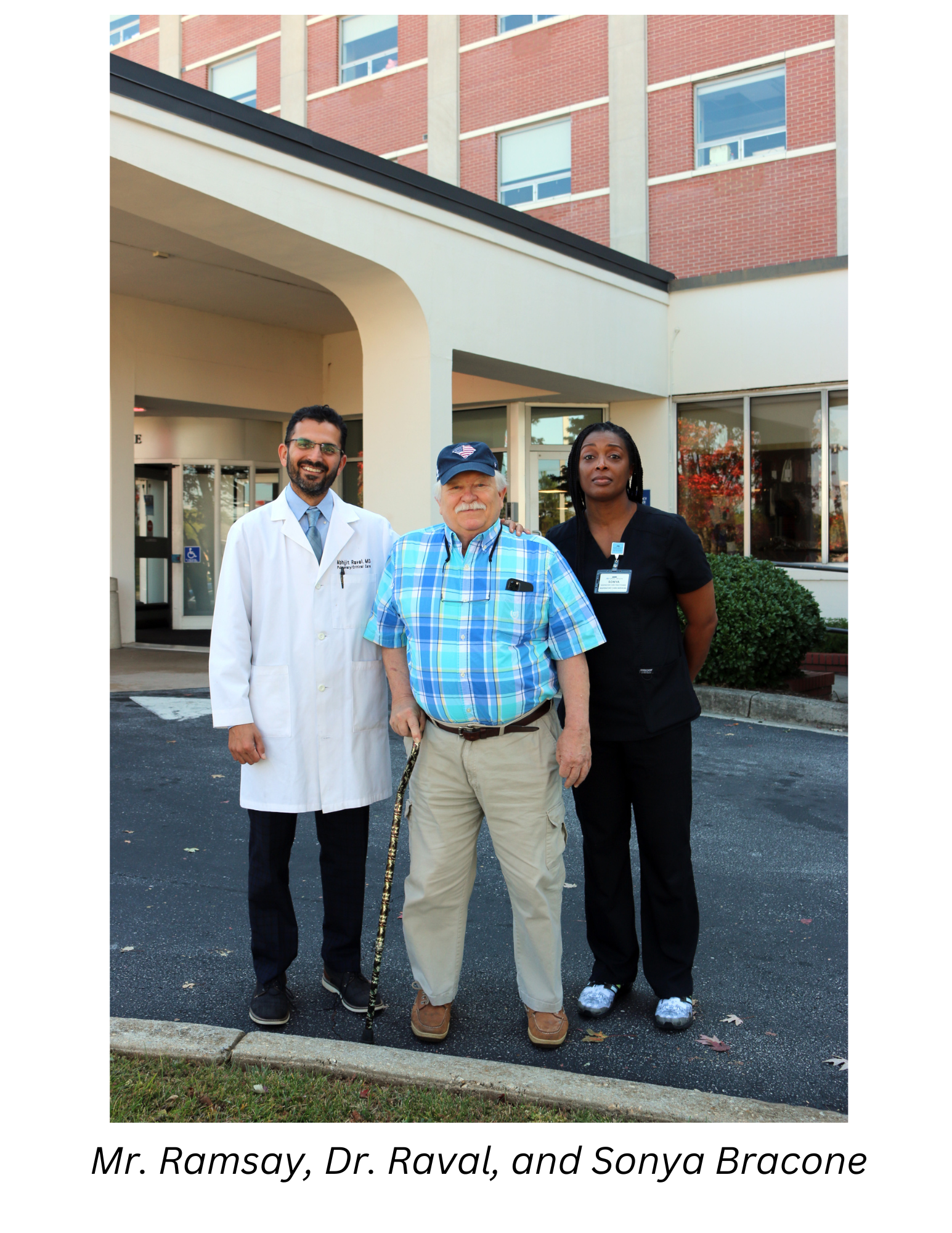 For several years, James Ramsay had been growing progressively short of breath. Then four years ago, in 2018, matters got worse—his breathing became shallower and more restrictive. Suddenly, doing the things he loved like yard work and gardening, became challenging, if not impossible.
For several years, James Ramsay had been growing progressively short of breath. Then four years ago, in 2018, matters got worse—his breathing became shallower and more restrictive. Suddenly, doing the things he loved like yard work and gardening, became challenging, if not impossible.
With any level of exertion now overwhelming, Ramsay began confining himself to his home more and more frequently. Even at rest, his energy levels were low and his inertia began affecting his homelife. Where he usually took up the grocery runs, now he could barely trek from the parking lot to the grocery store without feeling winded, causing his wife to shoulder more errands and responsibilities around the house.
A trip to his primary care physician earned Ramsay a referral to AnMed’s Dr. Abhijit Raval, a Pulmonologist and Director of Interventional Pulmonary and Pulmonary Vascular Disease. After an evaluation, Dr. Raval diagnosed Ramsay with severe Chronic Obstructive Pulmonary Disease (COPD) with gas trapping, a progressive disease that obstructs airflow from the lungs. Ramsay was ordered therapy and medication, including 18 sessions of pulmonary rehabilitation—a regimen that worked for about two years.
However, by late 2021, Ramsay’s breathing problems worsened to where he required oxygen nearly 24/7. In a follow-up visit to Dr. Raval in January of 2022, Ramsay was recommended for valve therapy.
Once he agreed, the AnMed team got to work. An independent pulmonary representative came to Ramsay’s home and explained the procedure in detail, explaining that there are two valve modalities that Dr. Raval can place, Spiration and Zephyr. Ramsay and Dr, Raval decided on Zephyr, and scheduled his surgery for March.
“I had read about the Valve Insertion Procedure and that Dr. Raval was performing the procedure with good results,” says Ramsay.
Unfortunately, Ramsay’s case isn’t all too uncommon. According to Dr. Raval, patients like him who have tried and failed other COPD therapies are in fact ideal candidates for valve therapy.
“When people go through a variety of different treatments— inhalers, exercise therapy, oxygen therapy—and nothing is working in the right direction and the patient remains refractory, valve therapy becomes an option. It’s like a bridge between medical therapy and definitive surgical therapy, such as a lung transplant,” says Dr. Raval.
To evaluate candidacy for valve therapy, Dr. Raval performs a thorough evaluation, including a CT scan of the chest, a six-minute walk to gauge lung function, and a pulmonary function test or air trapping test that measures the amount of air trapped in the lungs. For therapy referral, patients typically have to have 150% or higher of trapped air.
Once a patient, like Ramsay, agrees to the procedure, Dr. Raval says there’s a lot of preliminary dialogue that takes place: discussions about exercise therapy, maintaining adequate nutrition, and rehab to prepare patients both physically and psychologically.
The procedure itself is straightforward, minimally invasive—and quick. Therapy consists of a bronchoscopic procedure where a one-way valve is placed to help remove all the trapped air from a single lung.
“The valve allows air to slip out from a segment where it is placed but does not allow any more air to filter in, reducing the amount of excess air in the lungs,” says Dr. Raval. “The valve takes about 15-20 mins to insert and helps recirculate air, which goes into the healthier, better part of the lung. In turn, this allows for an improvement in the patient’s breathing efforts.”
Once the procedure is complete, patients may experience initial chest pain and breathing difficulty. However, they will see improvement in breathing capacity over time.
“Generally people have about a 15-20% improvement in their 6-minute walk results post surgery,” says Dr. Raval. “They can go back to walking their dogs or playing with their grandkids. We see patients grow confident and less depressed and dependent.”
In Ramsay’s case, that couldn’t be truer. Today, several months post procedure, Ramsay says he has more energy, doesn’t require oxygen for daily activities and has resumed many favorite pastimes he’d previously sacrificed.
“The AnMed staff and doctors are wonderful,” says Ramsay. “Everyone with COPD should consider this procedure. It has reversed years of decline from my COPD and greatly improved my quality of life.”
